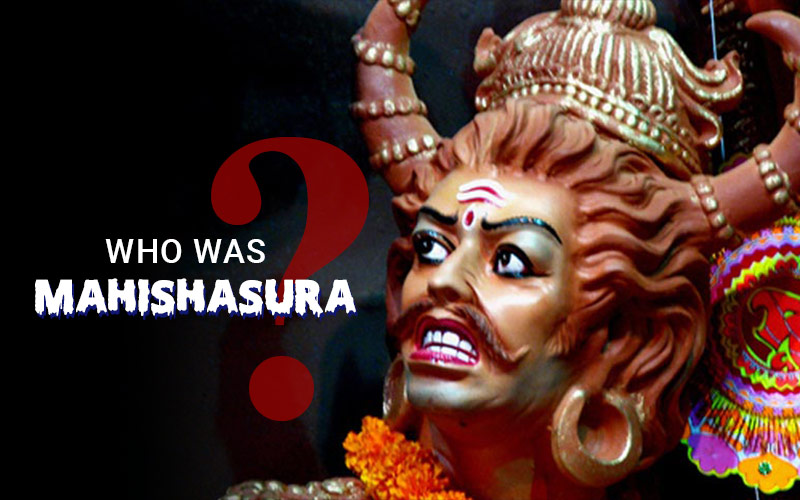
Who was Mahishasura?
The popular tale
Mahishasura was a demon in Hindu mythology known for his immense power and strength. The name "Mahishasura" is derived from two Sanskrit words: "mahisha," which means buffalo, and "asura," which means demon. Mahishasura, whose father was the demon king Rambha, came into existence through an unconventional union. This unique origin allowed Mahishasura the ability to seamlessly shift between the forms of a buffalo and a human at will.
According to legends, Mahishasura, a staunch devotee of the creator Brahma, received a powerful boon from Brahma that made him invincible against gods and demons. Emboldened by his newfound strength, Mahishasura began to terrorize both heaven and earth. He launched a sudden assault on heaven, vanquished Indra, and seized control of the celestial realm, forcing the gods to flee. Faced with this dire situation, the Devas (gods) turned to the Trimurti, comprising Brahma, Vishnu, and Mahesh (Shiva), seeking their intervention. Despite multiple attempts, the gods united their efforts to challenge Mahishasura's might, only to face defeat once more.
The gods, unable to
combat Mahishasura, combined their divine energies, and from this collective
power emerged Goddess Durga, a manifestation of divine feminine energy. Durga,
armed with various weapons and riding a lion, engaged in a fierce battle with
Mahishasura that lasted for nine days and nights.
Another folklore…
There is a popular legend that is an integral part of the cultural and historical heritage of Mysore (now Mysuru), a city in Karnataka, India. The story connects the city's name to the popular mythological tale of Mahishasura and the goddess Durga.
Goddess Durga, known locally as Chamundeshwari, defeated and killed Mahishasura on top of the Chamundi Hills, a prominent hill near Mysore. The spot where this legendary battle took place was constructed as the Chamundeshwari Temple. The temple is a significant religious and cultural landmark and is annually celebrated during Navaratri and Mysuru Dasara, a major festival in Mysore.
During the British era in India, the name "Mahishooru" underwent a transformation and was eventually anglicized to "Mysore." Later, as part of the Kannada language and cultural revival, the city's name was Kannadized into "Mysuru." This legend not only provides a fascinating origin story for the name of the city but also reflects the deep cultural and mythological significance of Mysuru and its connection to the worship of the goddess Durga.
Disclaimer: The opinions expressed in this article are those of the author's. They do not purport to reflect the opinions or views of The Critical Script or its editor.

Newsletter!!!
Subscribe to our weekly Newsletter and stay tuned.

















Related Comments